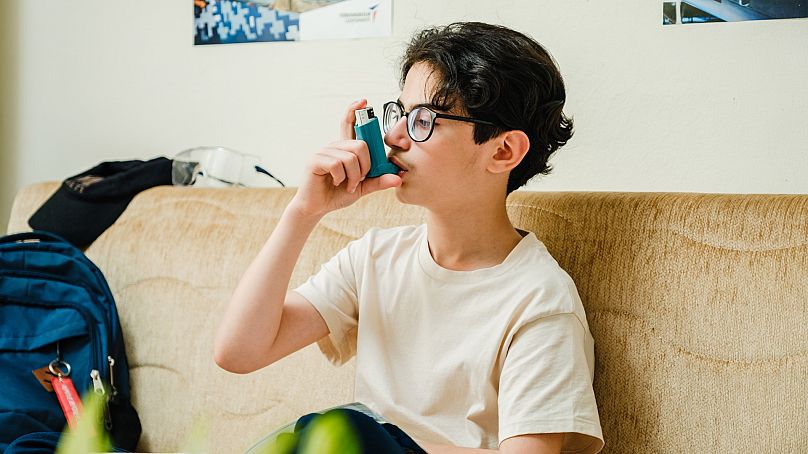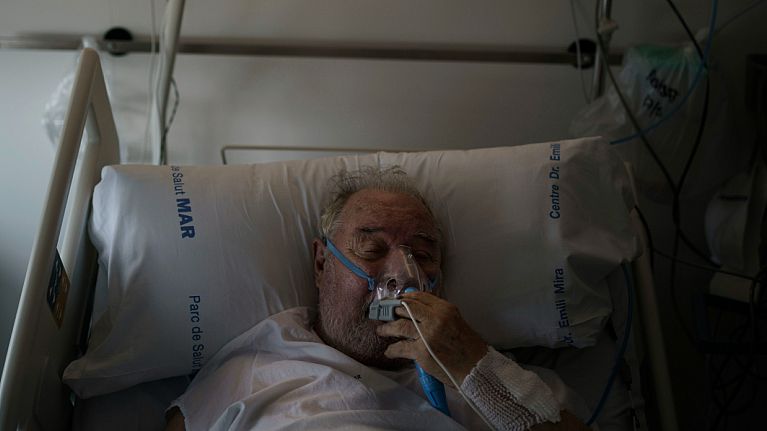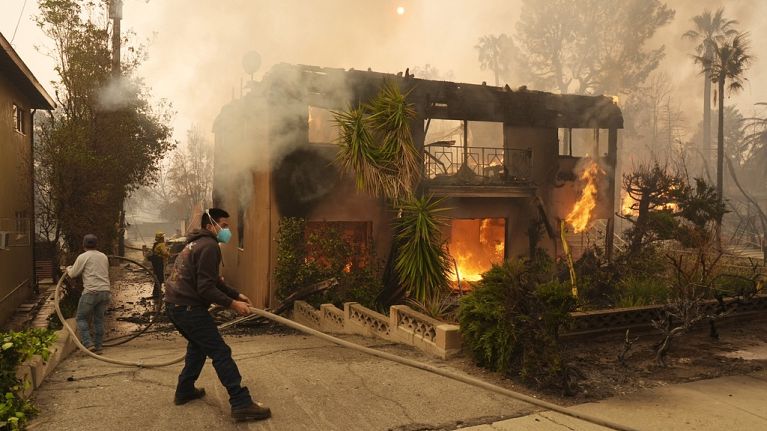Representatives from the European Respiratory Society are calling on the EU to lower regulatory limits for air pollution.
People with respiratory conditions such as asthma and chronic obstructive pulmonary disease (COPD) face greater risks from the climate crisis, experts say.
A newly published paper warns that rising temperatures and erratic weather patterns exacerbate lung problems.
Representatives from the European Respiratory Society are calling on the EU to lower regulatory limits for air pollution.
“We have reached a point of no return,” experts write in the European Respiratory Journal editorial published this week.
How does climate change affect human health?
The climate crisis has “devastating consequences” for human health, respiratory experts say in the peer-reviewed paper published on Monday.
The impact of environmental change on people’s health is now “irreversible,” they add.
Increasing levels of pollen and other allergens as well as dust storms and more frequent wildfires are deteriorating air quality and worsening respiratory conditions.
Experts also warn that prolonged allergen seasons and higher air pollution are causing people to develop new lung problems.
Air pollution was responsible for 6.7 million deaths in 2019 and 373,000 in Europe.
“The impacts of climate change on human health are pervasive, profound and substantial,” the authors write.
Children at higher risk from air pollution
Children are particularly vulnerable to climate change and air pollution because their lungs are still in the developmental stages.
They breathe more quickly and therefore inhale up to three times more air than adults when outdoors.
If young children are exposed to poor air quality, they are at a greater risk of developing chronic lung diseases like COPD and bronchitis later in life, the paper states.
Other vulnerable groups include chronic disease patients, older populations, pregnant women and people working outdoors such as in construction.
Respiratory experts call for limits on air pollution
Reducing greenhouse gas emissions and preventing further warming of the planet would lead to “substantially larger and more immediate benefits,” the authors write.
“Recent reports from the WHO [World Health Organisation] highlight that many measures to reduce emissions of greenhouse gases would translate into better air quality and substantial reductions in health risks,” they say.
“Thus, air pollution regulation that tackles direct sources of climate change, namely fossil fuel emissions, should be at the heart of any climate change mitigation strategy.”
The paper calls for the EU to align its air quality regulations with WHO standards.
Currently, the EU has a limit of 25 micrograms a cubic metre for fine particles (PM2.5 or a fraction of the diameter of a human hair) and 40 micrograms a cubic metre for nitrogen dioxide.
The WHO standards are five micrograms a cubic metre for PM2.5 and 10 micrograms a cubic metre for nitrogen dioxide.
Bringing EU limits in line with WHO regulations would be a “historic opportunity to deliver a policy working towards reduction in greenhouse gas emissions,” the experts say.
















